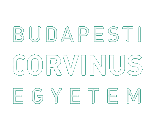Brunner, Csaba (2020) Intrusion detection by machine learning = Behatolás detektálás gépi tanulás által. Doktori (PhD) értekezés, Budapesti Corvinus Egyetem, Közgazdasági és Gazdaságinformatikai Doktori Iskola. DOI 10.14267/phd.2020026
Teljes szöveg
|
PDF : (dissertation in English)
2MB | |
|
PDF : (a disszertáció tézisei magyar nyelven)
591kB | |
|
PDF : (draft in English)
580kB |
Kivonat, rövid leírás
Since the early days of information technology, there have been many stakeholders who used the technological capabilities for their own benefit, be it legal operations, or illegal access to computational assets and sensitive information. Every year, businesses invest large amounts of effort into upgrading their IT infrastructure, yet, even today, they are unprepared to protect their most valuable assets: data and knowledge. This lack of protection was the main reason for the creation of this dissertation. During this study, intrusion detection, a field of information security, is evaluated through the use of several machine learning models performing signature and hybrid detection. This is a challenging field, mainly due to the high velocity and imbalanced nature of network traffic. To construct machine learning models capable of intrusion detection, the applied methodologies were the CRISP-DM process model designed to help data scientists with the planning, creation and integration of machine learning models into a business information infrastructure, and design science research interested in answering research questions with information technology artefacts. The two methodologies have a lot in common, which is further elaborated in the study. The goals of this dissertation were two-fold: first, to create an intrusion detector that could provide a high level of intrusion detection performance measured using accuracy and recall and second, to identify potential techniques that can increase intrusion detection performance. Out of the designed models, a hybrid autoencoder + stacking neural network model managed to achieve detection performance comparable to the best models that appeared in the related literature, with good detections on minority classes. To achieve this result, the techniques identified were synthetic sampling, advanced hyperparameter optimization, model ensembles and autoencoder networks. In addition, the dissertation set up a soft hierarchy among the different detection techniques in terms of performance and provides a brief outlook on potential future practical applications of network intrusion detection models as well.
| Tétel típusa: | Disszertáció (Doktori (PhD) értekezés) |
|---|---|
| Témavezető: | Kő Andrea, Fodor Szabina |
| Tárgy: | Számítástechnika |
| Azonosító kód: | 1099 |
| Védés dátuma: | 26 október 2020 |
| DOI: | 10.14267/phd.2020026 |
| Elhelyezés dátuma: | 22 Jul 2020 10:37 |
| Last Modified: | 02 Nov 2020 11:35 |
Csak a repozitórium munkatársainak: tétel módosító lap

 Letöltési statisztika
Letöltési statisztika Letöltési statisztika
Letöltési statisztika